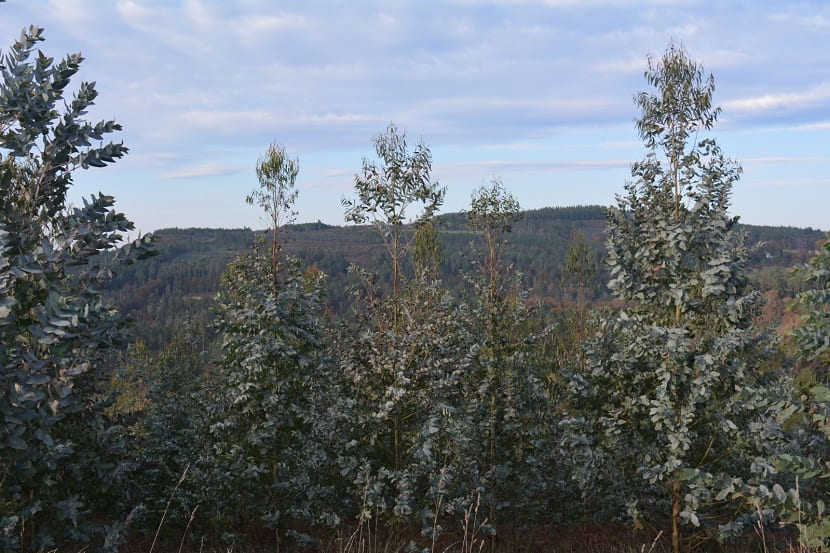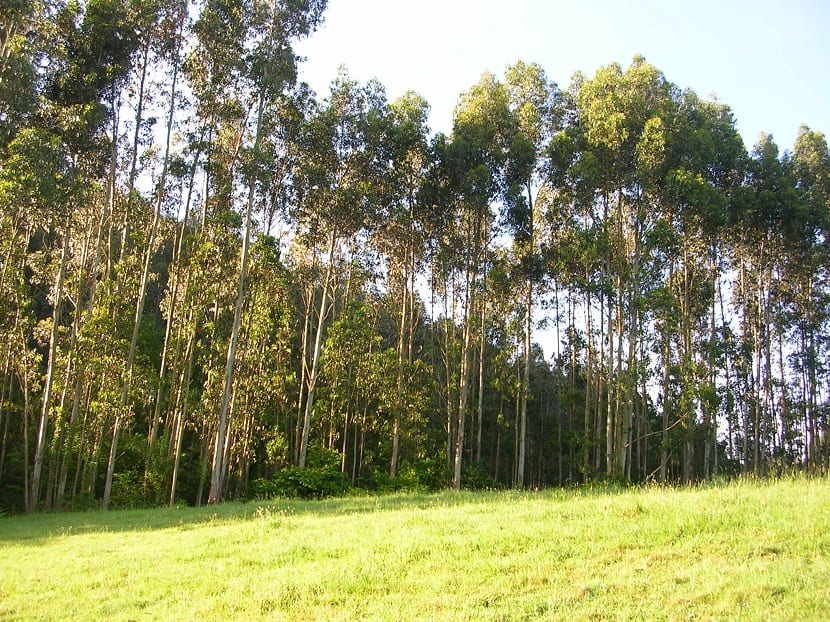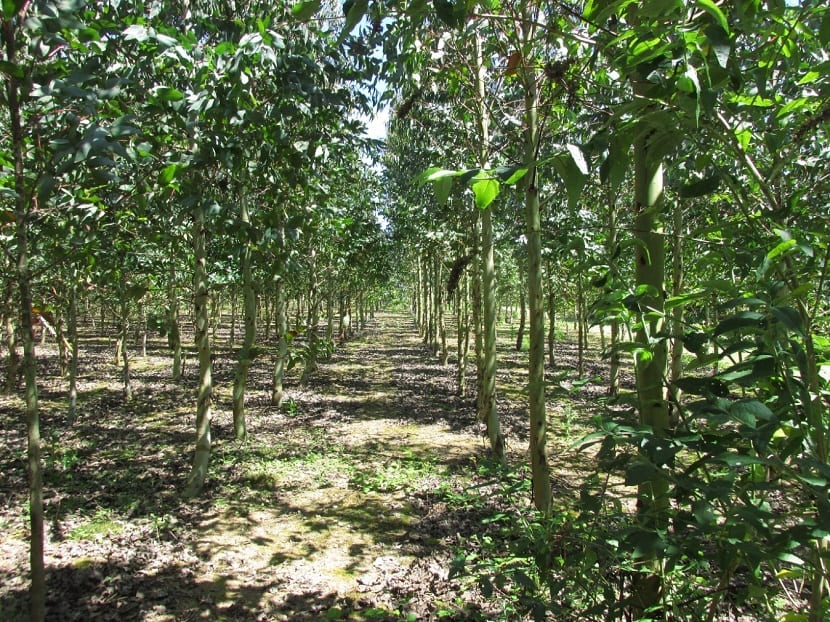
El eucalyptus nitens It is an evergreen tree in the Myrtle family. Very straight trunk with shiny white bark overlaid with strips of pewter bark. It reaches a height that exceeds 40 meters and can reach specimens of more than 80 and a diameter between 1 and 2 meters, with white flowers and a rapid growth rate. Excellent for firewood production.
Its name derives from the terms of Greek origin "Eu" which means good and "Calyptos" which expresses covered; while the word "Nitens" comes from the Latin term gloss and refers to the different parts of the tree that almost entirely show a shiny appearance.
From

In the regions of origin it presents a variable geographic distribution, it can be seen in the heights of the north of New South Wales to the mountains of the southeast of Victoria. The climatic conditions are characterized by their intense cold, with mild summers and a winter with frequent snowfalls.
Characteristics of the Eucalyptus nitens
It is a tree that grows very quickly, so it can reach a great height in a short time. They quickly develop a large canopy made up of branches and leaves that resembles a wind sail. Its trunk tends to develop straight, however, younger plants need some protection to prevent them from being knocked over by strong drafts. It is a tree very tolerant to climatic variations Due to its characteristics, it is cultivated in parks and agricultural spaces.
El eucalyptus nitens it does not present swelling on its stem, reproduces by sending epicormic buds around this. This characteristic diminishes over the years, to such an extent that a stump older than 10 years is unable to launch many new shoots to restart the growth process.
At first, its leaves turn bluish green, they thrive in an elongated and lanceolate shape, reaching up to 10 cm long by 6 cm wide and during adulthood their leafiness turns into a bright green with much more elongated, narrower leaves and with the classic scent of eucalyptus. Its fruits are sessile and serve for human consumption.
Uses
Planted in an appropriate environment, its rapid development means that your woody production is used quickly. Its wood is of excellent quality. Likewise, the cuts on its trunk are used as a protective girdle.
It is an interesting source of nectar and pollen for beekeeping. Its pulp is also used in the production of paper and its derivatives. Its magnificent wood is used in the construction of buildings of all kinds and carpentry work in general. It is grown to obtain natural biomass to generate energy. Its subtle oils are characterized by having significant amounts of alphapinene and 1,8-cineole, which is a fundamental component for preparing pharmaceutical oils. At present, the development and implementation of technology allows producers to increase its use.
Cultivation and care

It is an appropriate tree for parks and spacious agricultural lands, so it is important to grow it in places large enough for its best development. It is a tree that tolerates climatic variations very well, although the youngest trees would not tolerate temperatures below -12 ° C; while adults withstand up to - 14 C.
The best development occurs in well-drained and deep, moist and muddy soils, rich in nutrients. However, they do very well in a wide range of soils. In general, these maintain a kind of symbiosis with the fungi that occur in their roots because they serve to bring water and nutrients to them. They are ostentatiously displayed in the valleys and mountains that sometimes offer a kind of mosaic of different species of eucalyptus. In its natural environment, climatic conditions range from cold to hot and from humid to semi-dry.. It is one of the most frost-resistant eucalyptus trees and one of the most popular commercial species.
Parasites and diseases
Naturally, in many of these species the foliage of the eucalyptus nitens is sensitive to different species of parasites as is the case with Atta ants in Brazil. Another danger to the species are the marsupials that inhabit Australia and New Zealand.